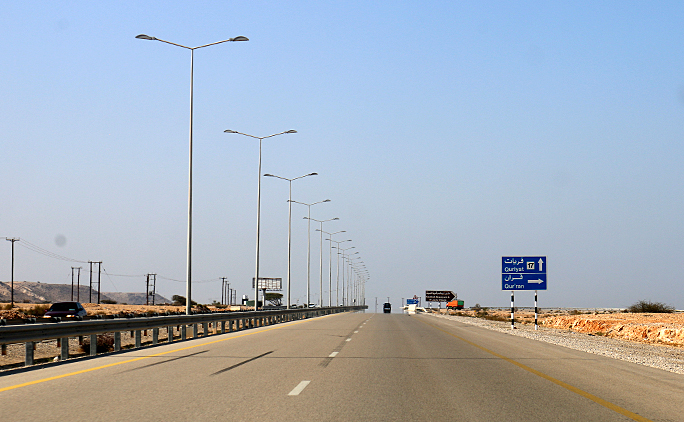What is the longest drivable distance on earth — with the caveat that it must be the shortest distance possible between two points — is an interesting question to ponder. Will we ever see the day where motorists can drive in all of the continents — with the exception of Antarctica — with the same vehicle by only using bridges and tunnels and without use of ferries or other conveyances to assist?
What Is the Longest Drivable Distance on Earth?
Before attempting to answer those two questions, recognizing that 163 countries require motorists to drive on the right side of the road while 76 countries require motorists to drive on the left side of the road is important to consider — especially when crossing borders to switch sides.
This month marks 50 years since drivers in Sweden were required to switch from driving on the left side of the road to driving on the right side of the road. On Sunday, September 3, 1967, Sweden became the latest country to implement the change. Martin J Cowling of Wild About Travel — who has lived most of his life in “left hand driving countries” — offers more information pertaining to Sweden and other countries requiring motorists to switch to driving on the other side of the road in this article…
…and in this article — which was written by René deLambert of René’s Points, as he speaks fluent Swedish — readers were asked in an informal and unscientific poll as to whether driving on the left side of the road is a “big deal.” Of the 128 readers who voted in the poll, 76 percent responded that driving on the left side of the road was no big deal.
I would have to concur with that. I will never forget the anticipation and trepidation of driving on the left side of the road for the first time: I was traveling as a passenger in the business class cabin seated upstairs on a Boeing 747-400 aircraft operated by Qantas Airways; and during the flight which lasted for approximately 14 hours — interrupted by a nap which lasted 30 minutes at the most; and that is not counting no sleep on two previous flights — I frankly was quite nervous about driving on the left side of the road.
Fortunately, I am experienced with driving a vehicle with manual transmission; but I am not left-handed. How will I do shifting with my left hand? Is everything in reverse to what I am accustomed — the gears, the pedals, the light and windshield wiper control stalks?
Despite the fact that approximately 90 percent of the total road distance in the world carries traffic on the right side of the road, I have since driven in at least eleven countries where driving on the left side of the road is compulsory; and I have never been involved in an accident — unless you count that stupid pothole I encountered on highway R76 in South Africa on my way to Lesotho.
I still have yet to cross a land border from one country to another — yet, anyway — where drivers are required to switch from one side of the road to another since I wrote this article on Tuesday, March 17, 2015 pertaining to driving on the opposite side of the road from which one is accustomed. I will hopefully experience this one day.
Although there are some land border crossings where bridges or other devices automatically assist drivers in switching sides of the road, you will most likely have to stop at a land border crossing anyway to get your paperwork in order; so switching sides of the road on which to drive should not be difficult to achieve.
Eight years ago this month, Samoa was the most recent country to order motorists to start driving on the opposite side of the road — in this case, from the right side to the left side — and was the first country in decades to do so…
…but that is an anomaly by the standards of today. Why does most of the world travel on the right side of the road today?
“Theories differ, but there’s no doubt Napoleon was a major influence”, according to this article written by Randy James of Time. “The French have used the right since at least the late 18th century (there’s evidence of a Parisian ‘keep-right’ law dating to 1794). Some say that before the French Revolution, aristocrats drove their carriages on the left, forcing the peasantry to the right. Amid the upheaval, fearful aristocrats sought to blend in with the proletariat by traveling on the right as well. Regardless of the origin, Napoleon brought right-hand traffic to the nations he conquered, including Russia, Switzerland and Germany. Hitler, in turn, ordered right-hand traffic in Czechoslovakia and Austria in the 1930s. Nations that escaped right-handed conquest, like Great Britain, preserved their left-handed tradition.”
Summary
According to this video, the longest continuous direct driving route in the world is 8,726 miles or 14,043 kilometers — from Sagres in Portugal to Khasan in Russia — consuming approximately six days and 19 hours of time.
You might think that starting somewhere in southwestern South Africa and winding up in eastern Russia would be the answer; but there are several issues as to why this route would not take the title, according to the video.
Building crossings to create a road which can literally be traveled around the world — from Punta Arenas in Chile to Cape Town in South Africa — has its own impediments, according to this video. The cost to complete such a continuous road would be approximately $233 billion — but if that road were actually completed after bridges and tunnels were constructed, you would most likely need 28 days to drive the approximately 15,000 kilometers — or 32,311 miles — from end to end…
…and I will bet that those estimates do not include time sitting in traffic…
Not much traffic is on Highway 17 heading northwest towards Muscat. Photograph ©2015 by Brian Cohen.

